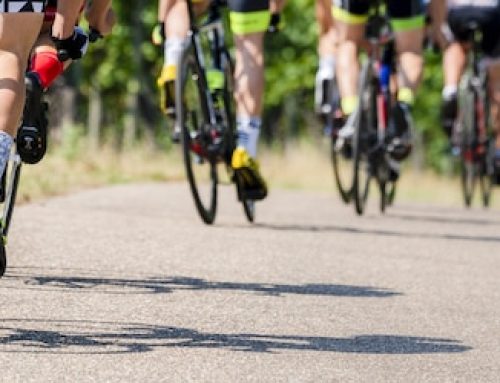Introduction
Are you worried that cycling will make your thighs bigger? Or maybe you’ve heard that cycling will reduce the size of your thighs? Well, the truth is, there is no straightforward answer to this question. It depends on a variety of factors, such as the intensity and length of your cycling workouts and your individual body composition.
Cycling and Muscle Mass
Cycling is a great exercise that can help you build muscle mass in your legs, including your quadriceps, hamstrings, and glutes. For example, if you focus on high-intensity interval training (HIIT) or hill climbing, you’ll likely build more muscle mass than if you focus on lower-intensity, steady-state cycling. Cycling primarily targets the muscles of the lower body, including the quadriceps, hamstrings, glutes, and calves. While cycling is generally considered an excellent form of cardiovascular exercise, it may not be the most effective activity for building significant muscle mass in the lower body compared to resistance training or weightlifting.
However, it’s important to note that cycling can still contribute to overall muscle tone and strength development in the lower body. Regular cycling can help improve muscular endurance, increase leg strength, and enhance the shape and definition of leg muscles.
To optimize muscle development while cycling, here are a few tips:
- Increase Resistance: Cycling on varied terrains, such as hills or inclines, can increase the resistance on your leg muscles, making them work harder and potentially stimulating muscle growth.
- Incorporate Interval Training: Intervals involve alternating between periods of higher intensity and lower intensity during your cycling sessions. Sprinting or pushing yourself during the high-intensity intervals can help stimulate muscle growth.
- Supplement with Strength Training: To further enhance muscle development, consider incorporating strength training exercises that target the lower body. Exercises such as squats, lunges, deadlifts, and leg presses can complement your cycling routine and promote muscle growth.
- Fuel Properly: Ensure you’re consuming an adequate amount of protein and overall calories to support muscle growth and repair. Protein-rich foods such as lean meats, poultry, fish, legumes, and dairy products can help meet your muscle-building needs.
Bigger Thighs from Cycling?
While cycling can help you build muscle mass, it’s unlikely to cause your thighs to get significantly bigger. This is because cycling primarily targets the endurance muscle fibers in your legs, which are not as prone to hypertrophy (muscle growth) as the fast-twitch muscle fibers that are targeted by weightlifting.
Smaller Thighs from Cycling?
Some people believe that cycling can make your thighs smaller, but this is also not entirely accurate. While cycling can help you burn fat and lose weight overall, it won’t necessarily target the fat in your thighs specifically. Nevertheless, if you combine cycling with a healthy diet and regular strength training, you can achieve a leaner, more toned physique overall, including in your thighs.
The Bottom Line
So, does cycling make your thighs bigger or smaller? The answer is, it depends. While cycling can help you build muscle mass and burn fat, its effects on your thighs will depend on a variety of factors, including the type and intensity of your cycling workouts and your individual body composition. Nevertheless, cycling is a great exercise that can improve your overall fitness and help you achieve a leaner, more toned physique.
Table
To illustrate the effects of cycling on muscle growth, the following table compares the muscle fiber composition of a cyclist (Type 1 fibers are endurance fibers while Type 2 fibers are fast-twitch fibers):
| Fiber Type | Percentage of Total Muscle Fiber |
|---|---|
| Type 1 (Endurance) | ~75% |
| Type 2a (Intermediate) | ~20% |
| Type 2b (Fast-twitch) | ~5% |
Conclusion
In conclusion, cycling is a great exercise that can help you build muscle mass and burn fat, but its effects on your thighs will depend on various individual factors. Remember that building significant muscle mass through cycling alone is unlikely, but if you combine cycling with a healthy diet and regular strength training, you can achieve a leaner, more toned physique overall. So, don’t be afraid to hop on a bike and enjoy the health benefits of this fantastic exercise!





